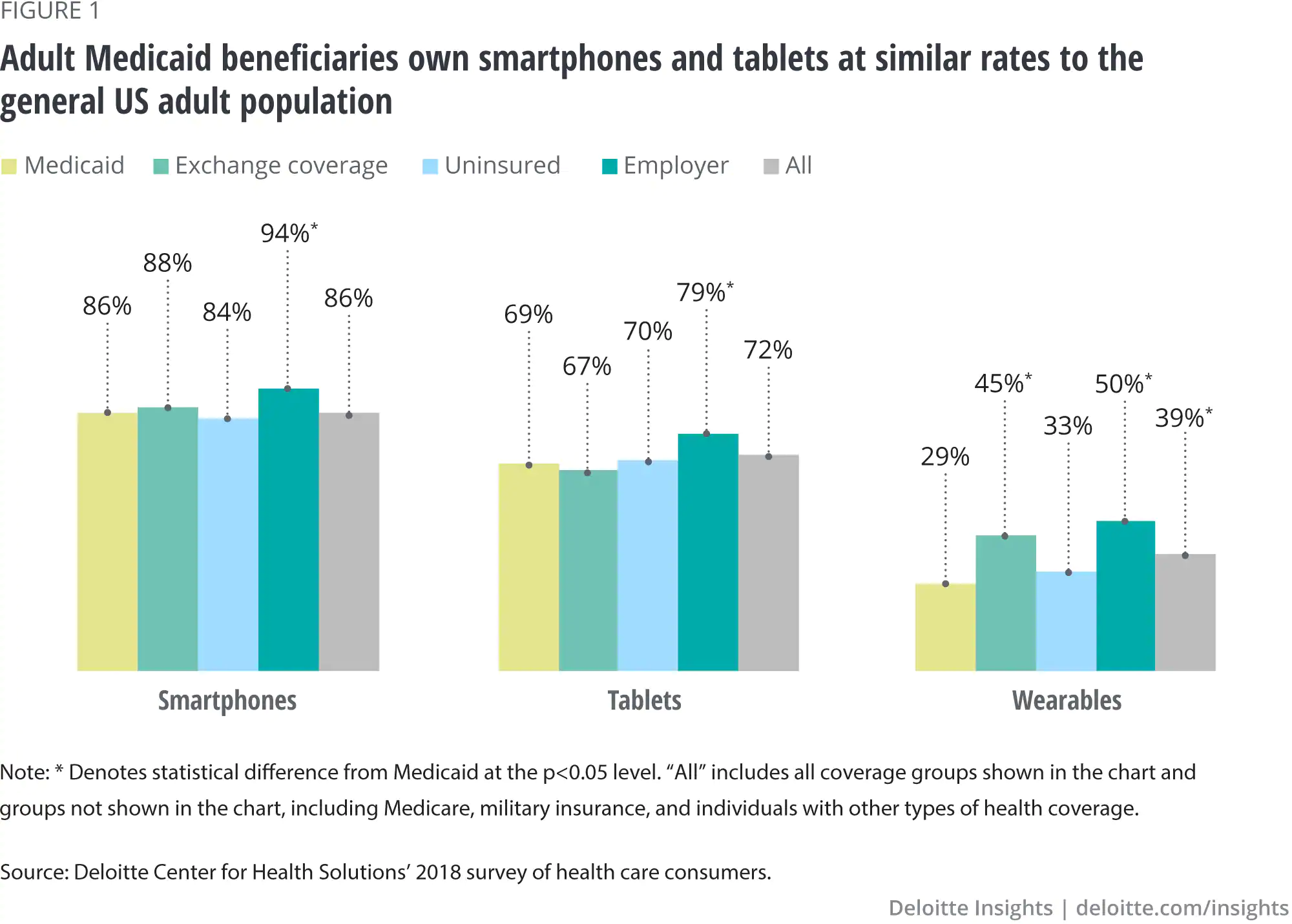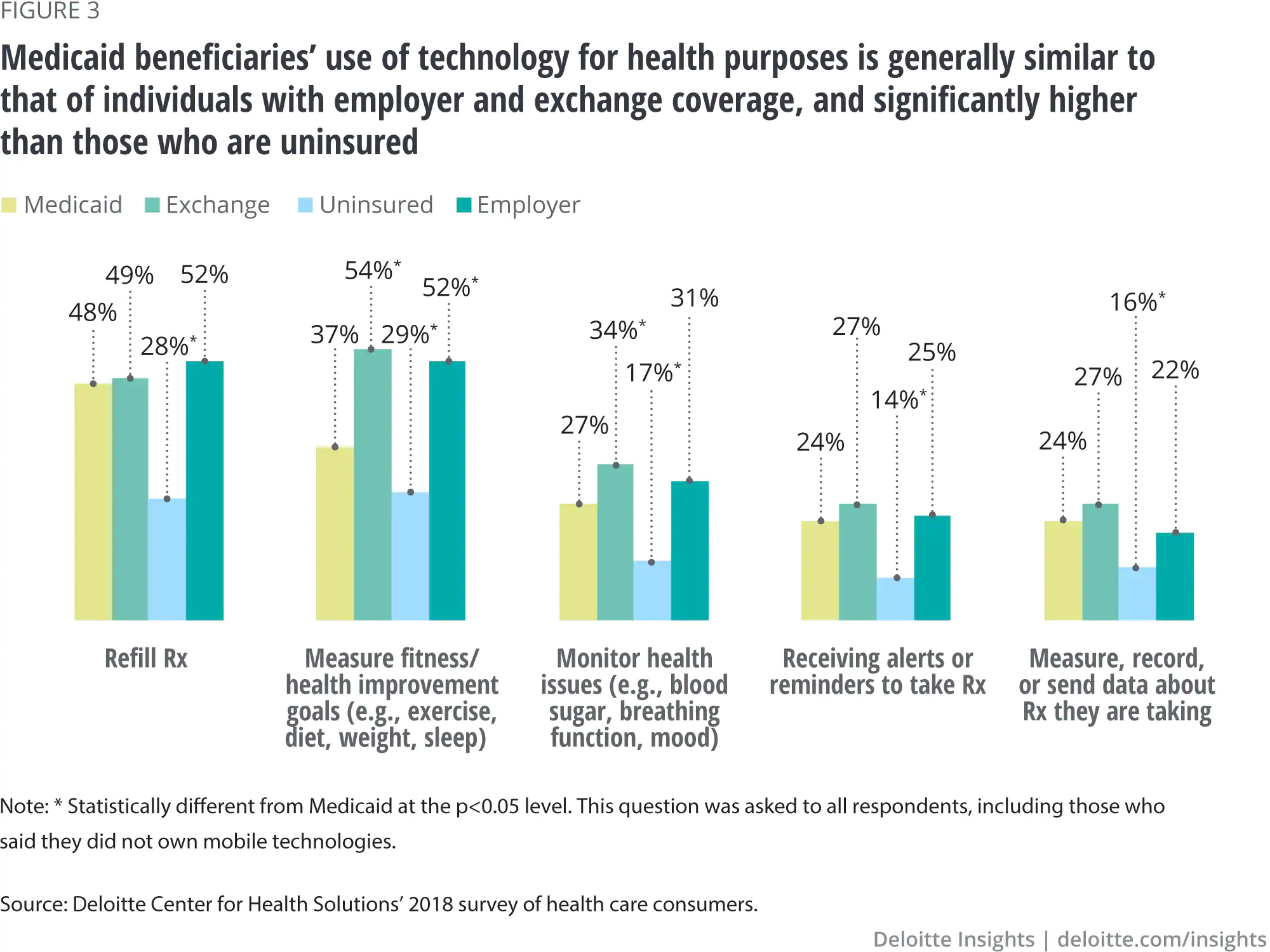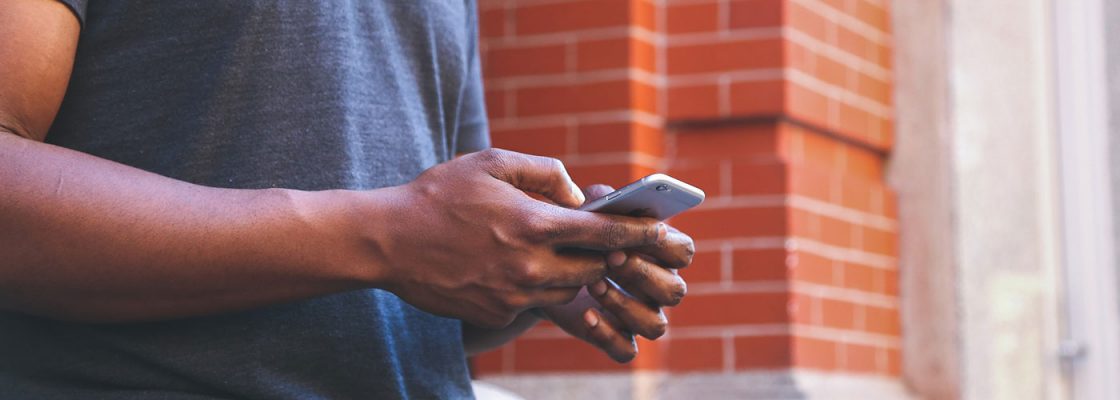I am really excited by some new data that was just released from the Deloitte 2018 Survey of US Health Care Consumers. This most recent survey shows that most Medicaid beneficiaries now have the technology and the appetite for digital health. We can no longer say that “our patients” are considerably different when it comes to technology. In fact, 86 percent of the adult Medicaid population own smartphones and 69 percent own tablets — the same rate as the general adult population.
This is exciting news AND I think it’ll be surprising to some health care stakeholders, especially those of us working in community health centers and public hospitals. While there are regional variations with this data, serious progress has been made in the last few years and the technology gap is closing fast.

Today 20 percent of Americans say a mobile device is the only way of connecting to the internet while at home. And so-called “smartphone dependence,” or reliance on a smartphone for a majority of internet activity, is even more pronounced in low-income populations. While many of us working in the health care safety net have been aware that texting and digital health tools are becoming critical ways to engage our patients, the shift from JUST text-enabled phones to the smartphone opens up some exciting possibilities. Perhaps we should be thinking bigger about using smartphones as real tools for education, engagement, and communication.
Right now, when it comes to health-related activities, Medicaid beneficiaries most commonly use their smartphones for refilling prescriptions. It’s interesting to think about how we can start optimizing our patient portals for smartphones.

At the same time, we must make sure the products and solutions being developed address the differences between Medicaid beneficiaries and insured populations, including the fact that our patients are much more likely to face challenges like unstable housing, unemployment, and food insecurity. We need to make sure that tech entrepreneurs and app developers acknowledge that many potential users have low literacy levels and are non-English speakers. And, most importantly, new digital health tools need be affordable to reach the safety net.
This latest data reinforces many previous surveys demonstrating that Medicaid beneficiaries are interested in using technology for a variety of health purposes. I think it will take a little testing to see what really sticks with patients and where they find the most value.
Does the Deloitte survey change how you think about digital health for your patients?

